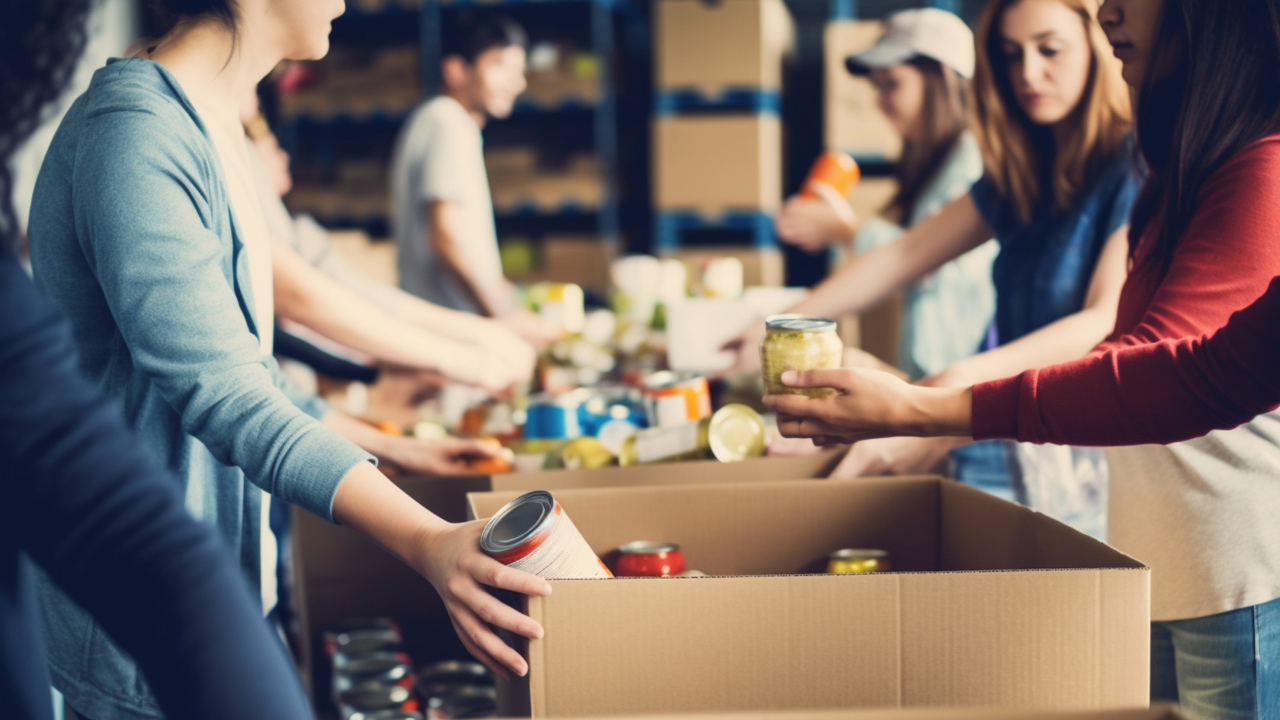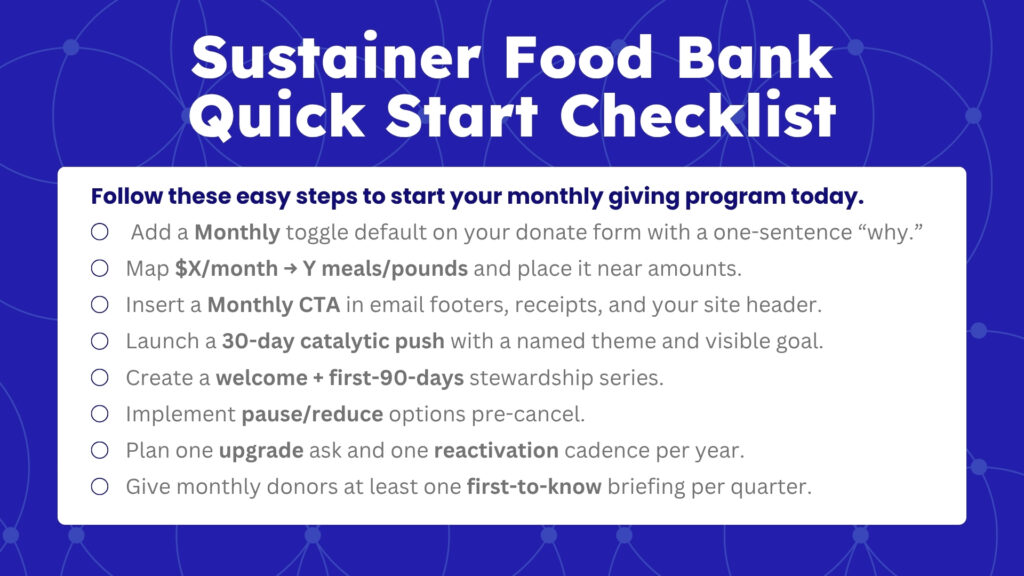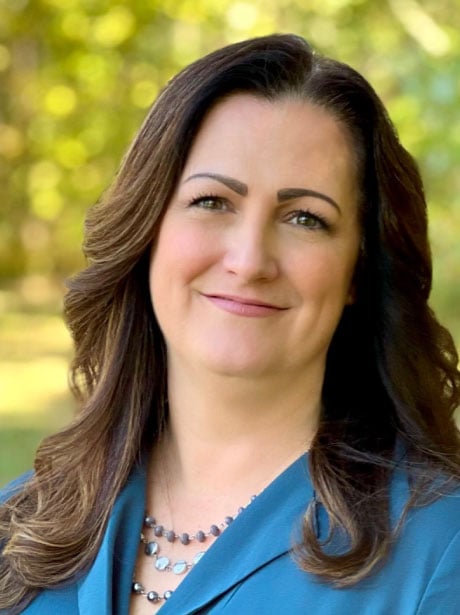Food Banks: Build Consistency & Community Through a Sustainer Program

Okay, be honest: How many monthly subscriptions do you have? Can you list them all?
With dozens of entertainment services, exercise memberships, and specialty boxes to choose from, we’re sure you have more than a few monthly expenses in set-and-forget mode. In fact, a 2025 survey by Bango found that the average American pays for 5.4 subscriptions — up from 4.5 the previous year.
Subscription models are one of the most reliable business practices today — and it’s time for nonprofits to catch up. Specifically, predictable revenue enables food insecurity organizations to plan and schedule their logistics, distributions, and volunteer coverage. That means you can keep serving your mission while the money rolls in.
Taken by generation, Gen Z (those born between 1997 and 2012) has 26% more subscriptions than the average adult, paying for nearly seven services. This group craves ease and convenience, two things you must offer if you want to attract younger donors.
Let’s explore why sustainer giving (also called recurring or monthly giving) can be your organization’s best friend. We’ll also share ways you can get started today.
The Case for Monthly Giving — Through a Food Bank Lens
Any nonprofit will benefit from a monthly giving program. However, the unique demands of a food bank make it well-suited for reliable funding. Here are some advantages:
Consistency = Stability
Fulfilling the vital mission of feeding communities requires constant coordination. Food banks are always in motion — sourcing donations, managing millions of pounds of food, scheduling deliveries and distributions, and mobilizing volunteers — they can’t rely on just one appeal to make it happen.
With a sustainer giving program, you gain the steady support you need to plan ahead. Each monthly gift helps shape your budget, making it possible to purchase food, deliver meals, and keep your operations running smoothly all year long.
Greater Lifetime Value
Monthly donors will also stay with your organization longer. While the average donor retention rate is about 55%, the rate for recurring donors is 80% in their first year of support and as high as 95% in their fifth year. Over their lifetime, monthly donors will give 440% more than one-time donors.
Look at it this way: The average one-time gift is $128, but the average monthly donation is $52, putting the annual total for sustainer donors at $624. Over five years, your one-time donor will have given $640, assuming you can retain them that long. By contrast, your monthly donor will have given $3,120.
Grow Your Community
Those who give monthly don’t see themselves as donors, but as partners. They are at your table each month, ensuring there’s enough food to go around. It’s a deeper sense of community than you get with a one-time donor, so communicate their impact accordingly.
For instance, tie dollar amounts to food outcomes wherever possible. Your organization likely already has verified meal math you can use. You might say, “$25/month = weekend backpacks for one child” or “$35/month = a fresh produce box for a family.” Keep it simple and specific: “This many dollars equals this specific food outcome.
The Playbook: Recruit, Onboard, Retain
Donors love subscription giving programs because once they sign up, they don’t have to think about it again. But for fundraisers, it takes some effort to make a monthly giving program as effective as possible.
Step 1: Recruitment
First, it’s critical to target the right donors. Focus on the segments of your donor file who are most likely to say “yes” to monthly giving, including:
- Loyal neighbors: Those who have given four or more gifts in the last 12 months.
- New donors: Invite them to give monthly while their excitement is high.
- Subscription natives: Target younger donors who are comfortable with autopay.
- Fixed-income supporters: They’ll appreciate the budgeting ease and the option to transfer funds directly from their bank.
You can also use your data to find potential sustainers. Layer your first-party data with modeled indicators, such as recency, frequency, channel, and content interests. Then, use your filters. “Food bank intent” will bring up those who prioritize hunger relief and making a local impact. “Channel consent” will sort donors by their communication preferences, like SMS or email.
Step 2: Onboarding
Use your existing fundraising channels to promote your monthly giving program. For instance, your welcome series is an ideal way to invite new donors to upgrade to a recurring gift from the start.
Also, set your donation page to default to monthly giving, along with a clear explanation of your “why.” This is another place where you can use your verified meal math to show just how far their dollars can go and the precise impact they can make.
Be sure to flag sustainers in your client relationship management (CRM) tool, so they receive the right cadence of messages. Think fewer appeals and more stewardship.
Step 3: Retention
Once monthly donors sign up, it’s time to delight them with thoughtful engagement. To make this easier, set up a stewardship calendar that includes:
- An immediate thank you message
- A welcome message in week 2
- An impact note in month 2
- A quarterly snapshot
- Anniversary love
Remember, retention rates for monthly donors are incredibly high, but they’re not 100%. Some donors will drop off, so off-board them with dignity. Offer donors the option to pause or reduce their monthly giving, rather than canceling outright, which demonstrates your care for them and their financial situation.
Download our Sustainer Giving for Food Insecurity Organizations: From Afterthought to Essential Strategy eBook
Build Community Through Branded Programs
There’s an art to developing a sustainer program that inspires people to join and creates a sense of belonging. It all starts with a name.
Tired: “Join our monthly giving program.”
Inspired: “Become a Full Plate Partner.” “Join our Meal Maker Society.” “Grab a seat at our Neighborhood Table.” “We’d love to have you as a member of our Harvest Circle.”
Choose a name that’s warm, human, and has a local connection. Keep it simple, though — you want something you can say out loud at distributions and events.
Build on your program’s identity by creating a logo specifically for your monthly giving program, to be used on all promotional materials and communications to members. The branding for this program should tie into your organization’s overall look and feel, yet be distinct enough to convey exclusivity.
Your monthly giving program should also offer simple yet meaningful benefits to its members. For instance:
- First-to-know updates and pantry “day-in-the-life” notes from staff and volunteers.
- Quarterly impact snapshots showing the number of meals delivered, food boxes distributed, or partner pantries served.
- Invite-only briefings before holiday distributions and during emergencies.
- Quarterly surprise-and-delight perks, such as recipe cards from pantry partners, digital stickers or badges, or early access to a tour.
Optimization Ideas You Can Ship This Month
One of the best things about a sustainer giving program is that you can start small. It doesn’t take a significant time or money investment to make a big impact.
Whether you’re boosting an existing program or starting from scratch, here are some things you can do now:
- Join the monthly giving programs at one or two other organizations to secret-shop the journey.
- Roll out a 30-day catalytic push to sign up new monthly donors. Include a modest welcome perk, like a branded membership pin or a grocery tote bag.
- Launch an annual upgrade effort with a core ask and a fallback ask. “Could you give $10 more per month? How about $5?”
- Develop a reactivation micro-series for card declines that includes an email, text, and call cadence.
Case Studies
Organization: Regional Food Bank Serving Counties in the Southeast
Program Name: Food Bank Monthly Sustainer
Offer & Channels: The CTA to “Start a Monthly Gift” was shared via email and paid social ads on Facebook and Instagram.
Results: Year-over-year, the number of new monthly sustainers more than doubled, and new monthly sustainer revenue more than tripled.
Why it worked: This was an urgent appeal to stock the shelves due to lost federal funding. Paid social ads retargeted previous donors segmented by GivingDNA Political Party Affiliation, while emails retargeted recent one-time donors who had given in the last 0–12 months.
Organization: Regional Food Bank in the Midwest
Program Name: Serving Hope
Offer & Channels: Email and paid social ads on Facebook and Instagram were used to promote the CTA of starting a monthly gift.
Results: New monthly sustainers increased by more than 6.5x YoY, while new monthly sustainer revenue increased by more than 8x YoY.
Why it worked: After losing federal funding, the food bank urgently needed to stock the shelves and gain 50 new monthly donors. Emails were sent to donors who had given once in the last 0–12 months, and paid social ads retargeted previous donors segmented by their political party affiliation.
Organization: Large Food Bank Serving the Northeast
Program Name: Full Plate Society
Offer & Channels: The CTA, “Start a Monthly Gift,” was shared via email and paid Facebook and Instagram ads.
Results: New monthly sustainers more than tripled YoY, and new monthly sustainer revenue increased by 47.4%.
Why it worked: The organization needed 50 new monthly donors to help it stock the shelves after losing federal funding. Messaging was segmented, with emails retargeting recent one-time donors and ads retargeting previous donors based on their political affiliation.
Quick-Start Checklist

Copy and paste these easy steps directly into your task list to start your monthly giving program today.
- Add a Monthly toggle default on your donate form with a one-sentence “why.”
- Map $X/month → Y meals/pounds and place it near amounts.
- Insert a Monthly CTA in email footers, receipts, and your site header.
- Launch a 30-day catalytic push with a named theme and visible goal.
- Create a welcome + first-90-days stewardship series.
- Implement pause/reduce options pre-cancel.
- Plan one upgrade ask and one reactivation cadence per year.
- Give monthly donors at least one first-to-know briefing per quarter.
FAQ (Food Bank Edition)
Do we need benefits? Yes, but keep it simple. Priority access to events, first-to-know impact reports, and occasional behind-the-scenes peeks go further than merch.
How many one-time asks do we present to sustainers? To reduce donor fatigue, limit one-time asks to four times a year or less. Tie the ask to real moments, such as calendar year-end, special campaigns, or emergency responses.
How do we talk about “meals”? Use your own verified conversion (meals/pounds per dollar) and explain it clearly in a tooltip or footnote. Example: “Every $1 helps provide 5 meals.”
Ready to take the next step? Schedule a meeting with our food insecurity experts. We’ll help you scope or optimize a sustainer program that fuels your food bank’s future.

About Liz Lowe, VP, Client Relationships
Liz has over 20 years of fundraising, data management/processing, data analytics, production, digital, design, and media brokerage experience. With a heart founded in data, her primary goal is to find new ways to look at and use your data to inform strategy. She is highly skilled at utilizing a data-driven strategy to increase the response to your impactful direct response campaigns.
With experience on both the agency and production side of direct response campaigns, Liz has worked with a diverse portfolio of clients. In her current Client Relations role, Liz has followed her personal passion for making food accessible to everyone by leading the Food Bank and Human Services vertical at AGP. She brings her data-focused strategies to her clients to maximize the impact they can make in their communities to help those facing food insecurity and other barriers.